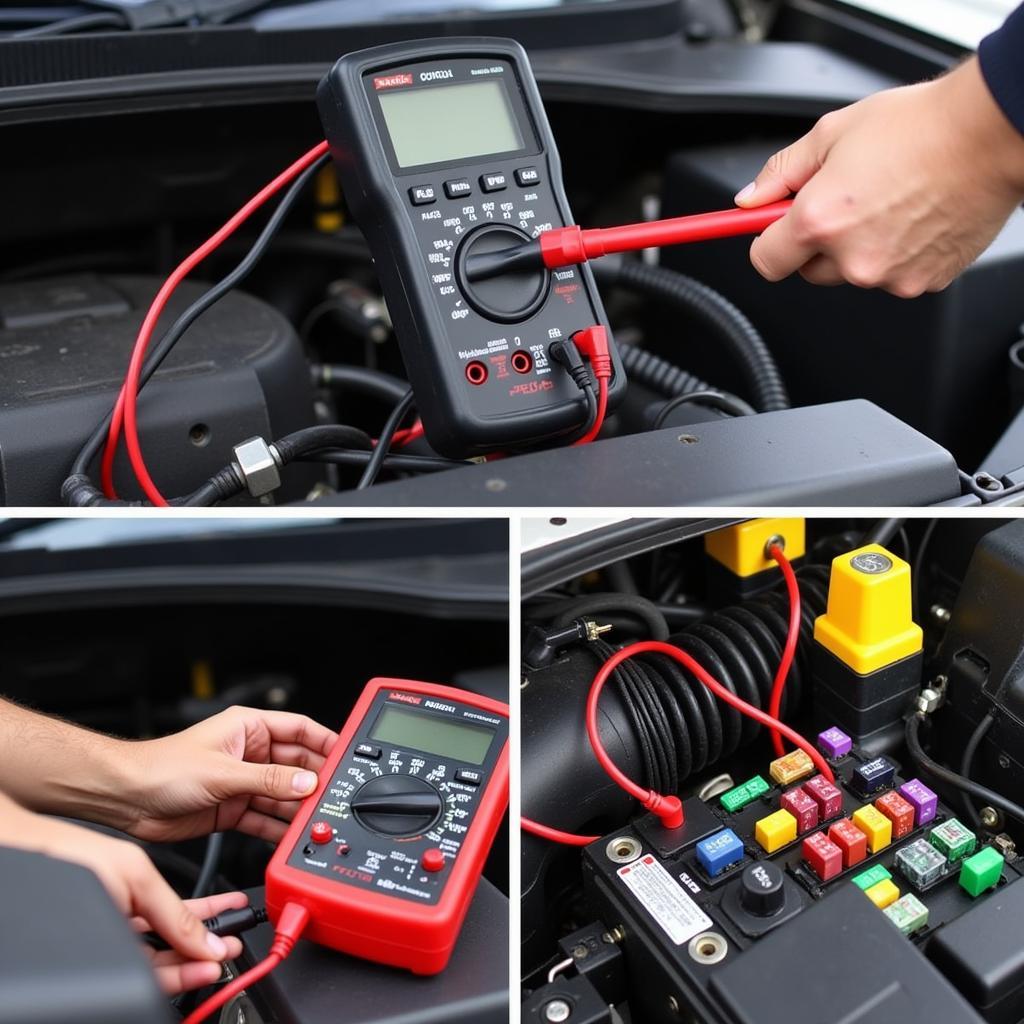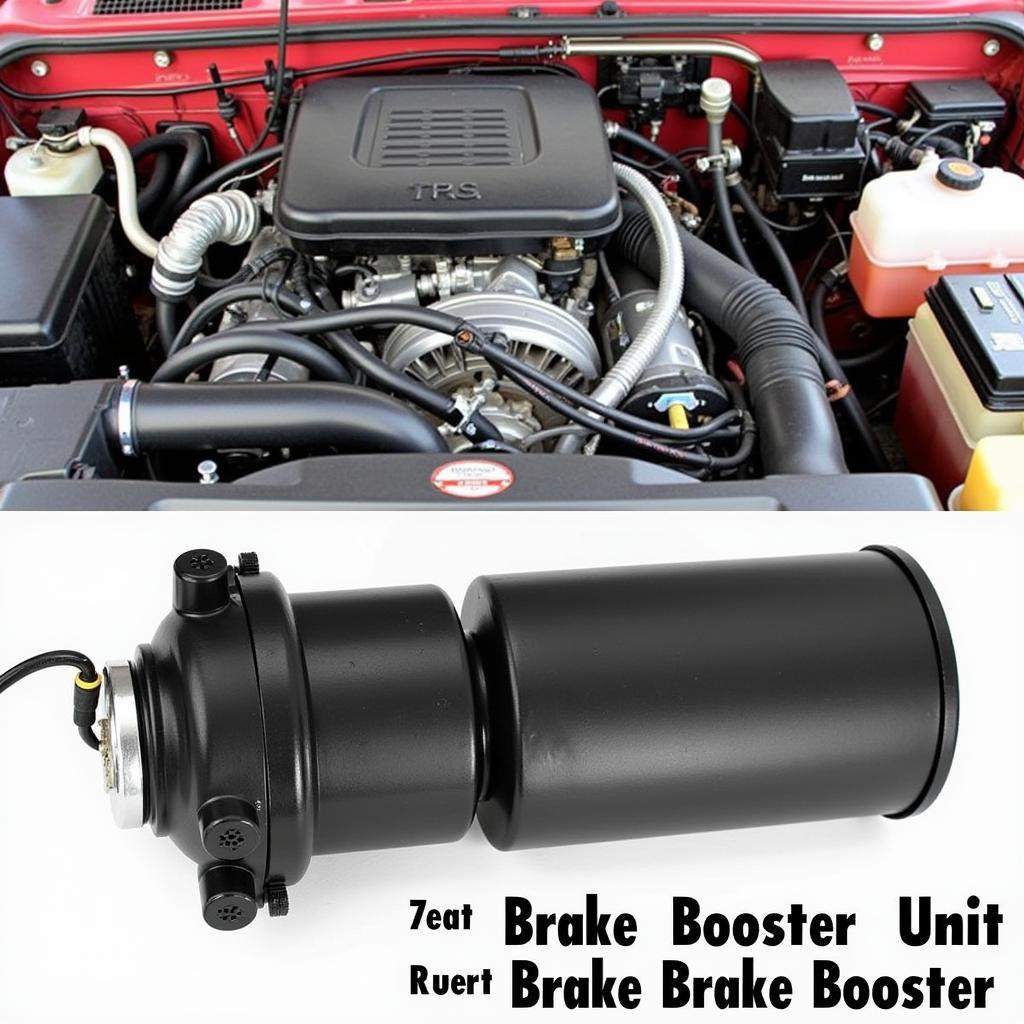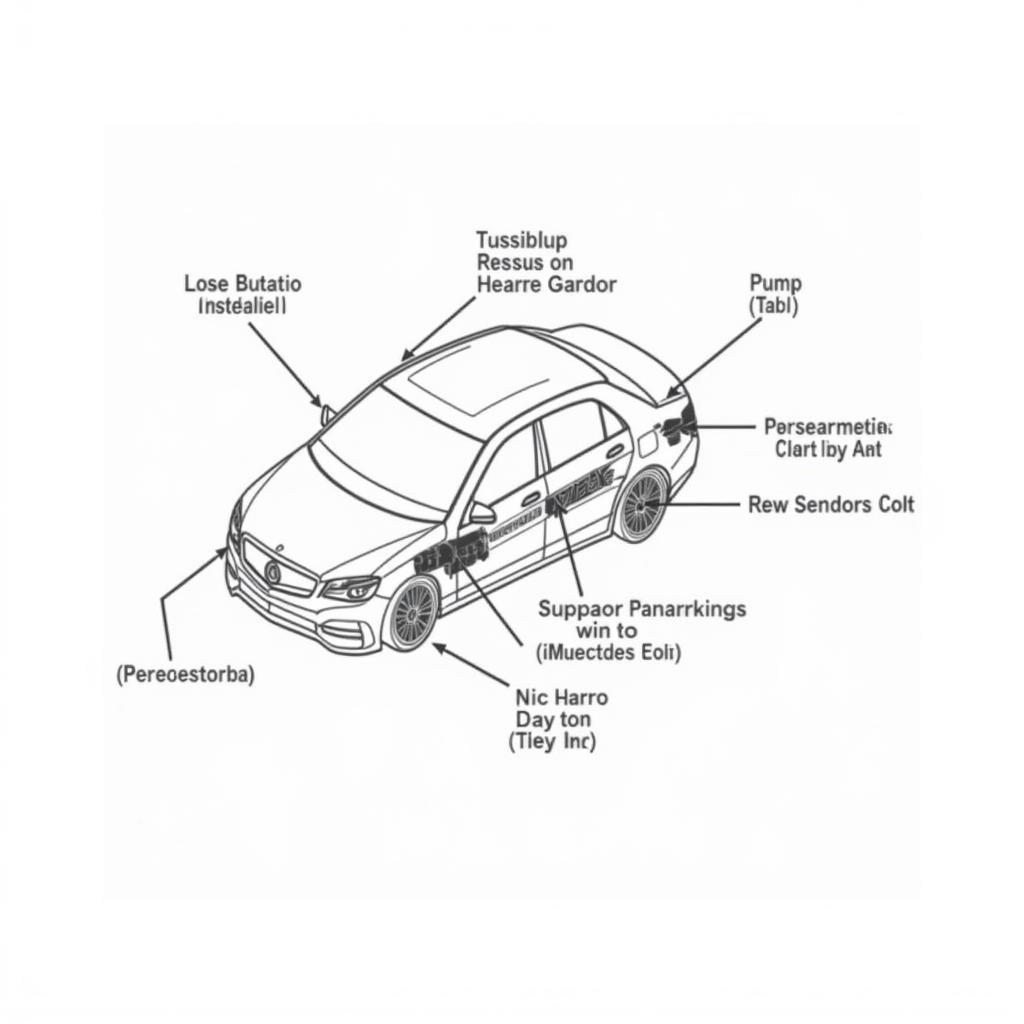A dead car battery is a frustrating experience, but understanding the common causes of a car battery drain issue can help you troubleshoot and even prevent it. From parasitic draws to faulty alternators, this guide will equip you with the knowledge to diagnose and solve your car battery problems.
Understanding the Car Battery Drain Issue
A car battery drain issue, simply put, is when your battery loses its charge faster than it should. This can manifest as difficulty starting your car, dimming headlights, or even a complete failure of the electrical systems. Several factors can contribute to this issue, ranging from simple user errors to more complex mechanical or electrical faults.
Common Causes of a Car Battery Drain Issue
- Parasitic Draw: This refers to the continuous drain of power even when the car is off. Common culprits include interior lights left on, faulty wiring, or aftermarket accessories improperly installed.
- Faulty Alternator: The alternator is responsible for recharging the battery while the engine is running. A malfunctioning alternator won’t charge the battery properly, leading to a gradual drain.
- Extreme Temperatures: Both extreme heat and cold can affect battery performance. Heat can accelerate the chemical reactions within the battery, shortening its lifespan, while cold can reduce its capacity to hold a charge.
- Old Age: Batteries have a limited lifespan, typically 3-5 years. As a battery ages, its ability to hold a charge diminishes.
- Short Trips: Frequently taking short trips without allowing sufficient time for the alternator to recharge the battery can also contribute to a drain.
 Car Battery Drain Due to Parasitic Draw
Car Battery Drain Due to Parasitic Draw
Diagnosing Your Car Battery Drain Issue
Identifying the root cause of your car battery drain is crucial for effective repair. Here are some steps to diagnose the problem:
- Visual Inspection: Start by checking for any obvious issues, such as interior lights left on, or corroded battery terminals.
- Battery Test: Use a multimeter to check the battery voltage. A fully charged battery should read around 12.6 volts.
- Parasitic Draw Test: With the car off and all accessories turned off, disconnect the negative battery terminal and connect the multimeter in series between the terminal and the cable. A reading of more than 50 milliamps indicates a parasitic draw.
- Alternator Test: With the engine running, check the battery voltage again. It should read between 13.5 and 14.5 volts. A lower reading suggests a problem with the alternator.
Solutions for Car Battery Drain Issue
Once you’ve identified the cause, you can take the appropriate steps to fix the problem.
- Addressing Parasitic Draw: If you’ve detected a parasitic draw, systematically check fuses and relays to identify the circuit causing the drain. Consult your car’s wiring diagram for assistance.
- Replacing the Alternator: A faulty alternator needs to be replaced. This is best done by a qualified mechanic.
- Battery Replacement: If your battery is old or damaged, it’s time for a new one.
- Modifying Driving Habits: Avoid frequent short trips or ensure sufficient driving time to allow the alternator to recharge the battery.
Remote Diagnostics and Software Solutions
Modern vehicles are increasingly reliant on software and electronics. Remote diagnostics and software updates can sometimes address underlying issues contributing to battery drain. Consult a specialist for this service.
“Remote diagnostics can save valuable time and money by pinpointing the exact cause of a battery drain without the need for extensive physical inspection,” says John Smith, Automotive Electrical Engineer at Advanced Auto Solutions.
Conclusion
A car battery drain issue can be a nuisance, but by understanding the common causes and employing the right diagnostic techniques, you can effectively resolve the problem and get back on the road. Don’t hesitate to consult a qualified mechanic if you’re unsure about any of the steps or encounter complex issues. Regular battery maintenance and being mindful of your driving habits can help prevent future car battery drain issues.
FAQ
- How often should I check my car battery? It’s a good idea to check your battery at least twice a year, especially before the onset of winter and summer.
- Can a bad battery cause damage to other car parts? Yes, a failing battery can put strain on the alternator and other electrical components.
- How long can a car battery last without being driven? This depends on the battery’s condition and the ambient temperature. Generally, a healthy battery can last for several weeks or even months without being driven.
- What is the average cost of a car battery replacement? The cost of a car battery replacement varies depending on the type and size of the battery, but it typically ranges from $100 to $300.
- How can I prevent a car battery drain issue? Regularly checking your battery, avoiding short trips, and ensuring all accessories are turned off when the car is parked can help prevent battery drain.
- Is it safe to jump-start a car with a completely dead battery? Yes, it’s generally safe to jump-start a car with a dead battery, but follow proper procedures to avoid damage.
- What should I do if my car battery keeps draining even after replacing it? If your new battery drains quickly, there’s likely an underlying electrical issue that needs to be diagnosed and repaired by a qualified mechanic.



